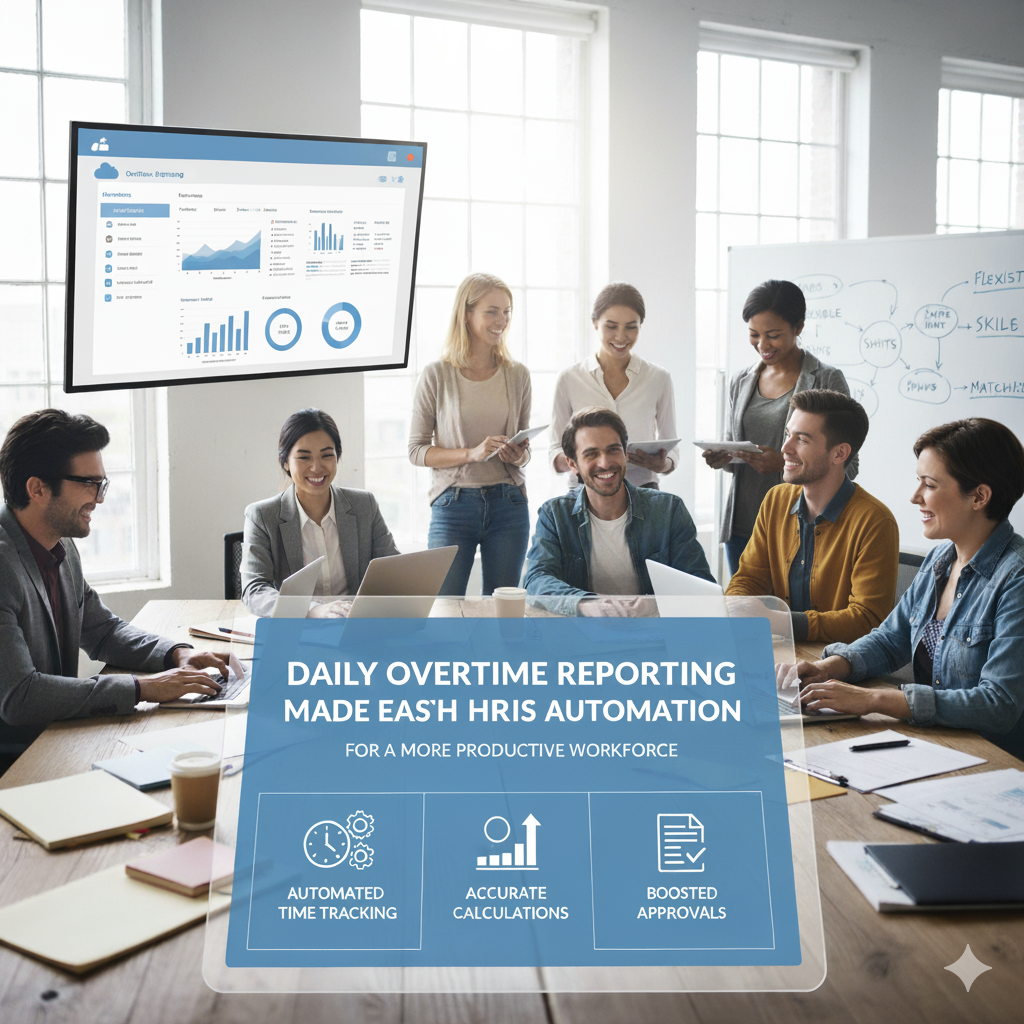Overtime is one of the most sensitive and costly components of workforce management. When tracked manually, overtime hours can easily be miscalculated, misreported, or overlooked—leading to payroll errors, compliance issues, and frustrated employees.
This is where Human Resource Information Systems (HRIS) come in. With daily overtime report automation, organizations gain real-time visibility, reduce risks, and ensure accurate payroll processing. In this article, we explore how HRIS automation simplifies daily overtime reporting and the best practices to maximize its benefits.
What Is HRIS Daily Overtime Reporting?
HRIS daily overtime reporting is the automated process of capturing, analyzing, and generating overtime data every day. This includes:
- Total overtime hours worked
- Employees nearing overtime thresholds
- Shift patterns causing excess overtime
- Daily variance between scheduled and actual hours
- Real-time alerts for managers
By automating this process, HRIS eliminates guesswork and minimizes the administrative workload.
Key Benefits of Automating Daily Overtime Reports
✔ 1. Accurate Payroll and Reduced Errors
Manual overtime calculations often lead to misinterpretations of policies or incorrect calculations. HRIS ensures:
- Precise hour calculations
- Automatic rounding rules
- Real-time syncing with timekeeping systems
This accuracy helps reduce payroll disputes and boosts employee trust.
✔ 2. Real-Time Visibility for Managers
Daily reporting gives supervisors instant insight into who is:
- Working beyond scheduled hours
- Approaching overtime limits
- Frequently logging unexpected overtime
This empowers managers to take immediate action to control labor costs.
✔ 3. Compliance Made Simple
Overtime laws vary by country, state, and industry. HRIS ensures compliance by:
- Enforcing legal overtime thresholds
- Flagging violations before they occur
- Documenting data for audits
Automation protects your organization from financial penalties and legal risks.
✔ 4. Improved Workforce Planning
Daily overtime analytics reveal patterns such as:
- Staffing shortages
- Departments with workload imbalances
- Repeated shift extensions
These insights help HR and operations leaders optimize workforce distribution.
✔ 5. Reduced Administrative Time
HR teams no longer spend hours gathering timesheets or recalculating errors. HRIS automation handles everything, allowing HR to focus on strategic work instead of repetitive tasks.
How HRIS Automation Works for Overtime Reporting
- Data Collection
HRIS pulls attendance data from the timekeeping system every day—automatically. - Policy Application
Overtime rules (daily, weekly, rest periods, double-time) are applied instantly. - Report Generation
The system creates clean, accessible reports for HR, payroll, and management. - Alerts and Notifications
Managers receive automatic alerts for: Overtime spikes, Potential policy violations, Excessive daily hours. - Integration with Payroll
The approved overtime data flows directly into payroll for fast, accurate processing.
Best Practices for Effective Daily Overtime Reporting with HRIS
✔ Set Clear Overtime Policies Within the System
Define rules such as:
- Daily/weekly overtime thresholds
- Meal/rest break penalties
- Double-time calculations
- Weekend and holiday rules
Clear configurations improve accuracy.
✔ Use Real-Time Alerts Proactively
Equip managers with notifications so they can:
- Reassign tasks
- Adjust schedules
- Rebalance workload
Stopping unnecessary overtime saves labor costs.
✔ Allow Supervisors to Review Daily Reports
Encourage daily oversight rather than weekly or monthly. This keeps:
- Actual hours aligned with schedules
- Errors corrected immediately
- Productivity optimized
✔ Integrate HRIS with Time & Attendance
Seamless syncing ensures smooth data flow with minimal errors.
✔ Analyze Trends for Long-Term Improvement
Use HRIS analytics to understand:
- Which teams overrun schedules most
- Seasonal overtime spikes
- Recurring bottlenecks
This helps improve staffing models and forecasts.
The Bottom Line
Daily overtime reporting doesn’t have to be stressful or complicated. With HRIS automation, organizations can streamline the process, eliminate errors, improve compliance, and make smarter workforce decisions.
Automating overtime reporting isn’t just a convenience—it’s a strategic advantage that saves money, boosts accuracy, and empowers managers with real-time data.

